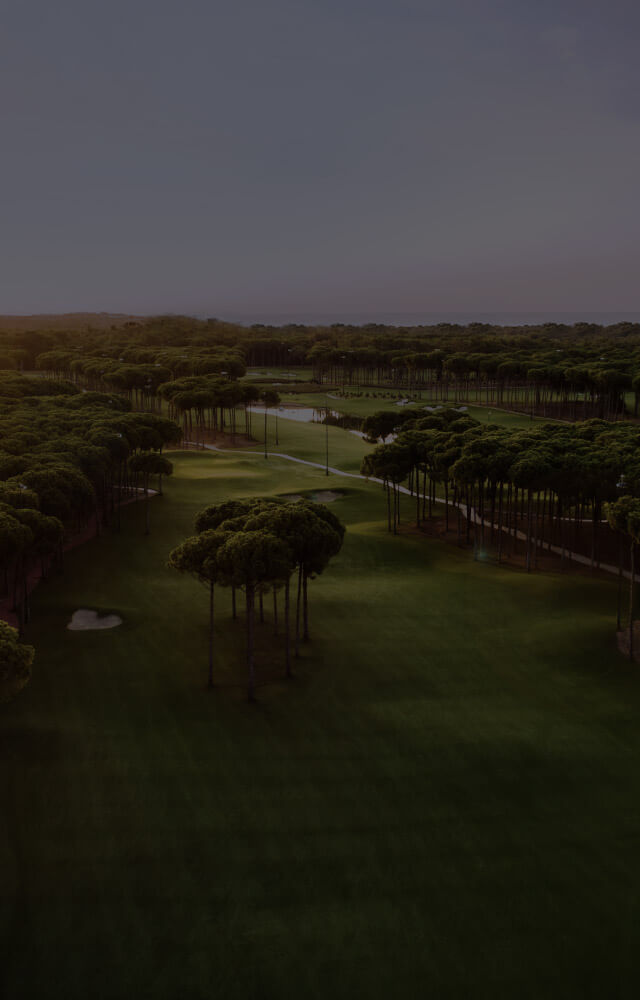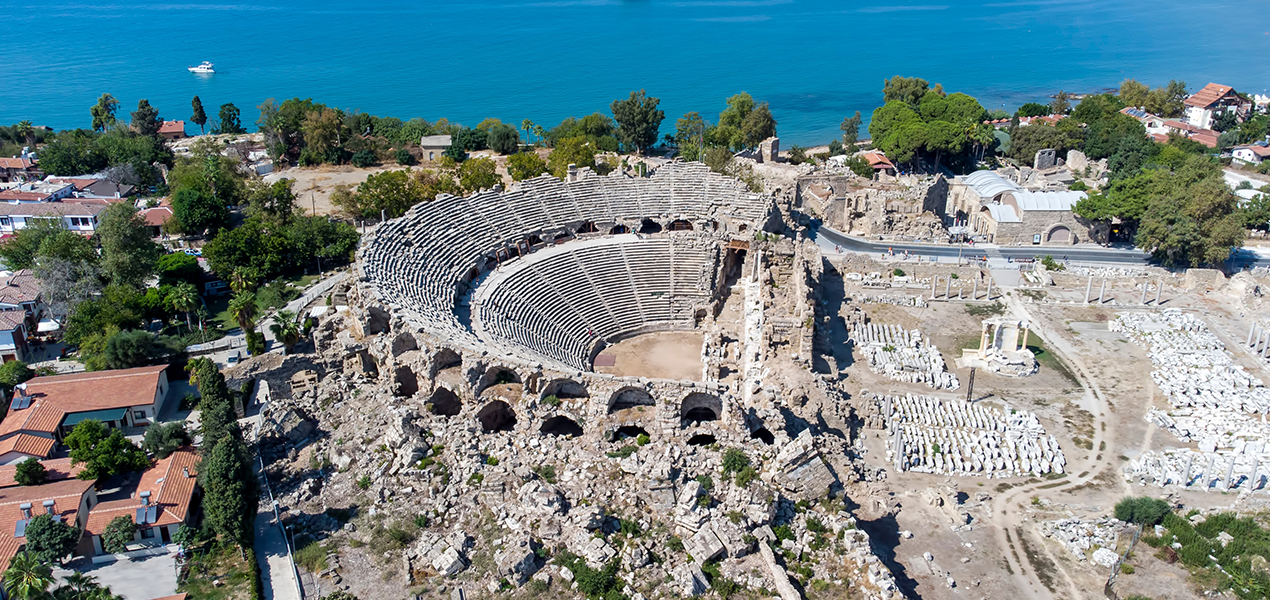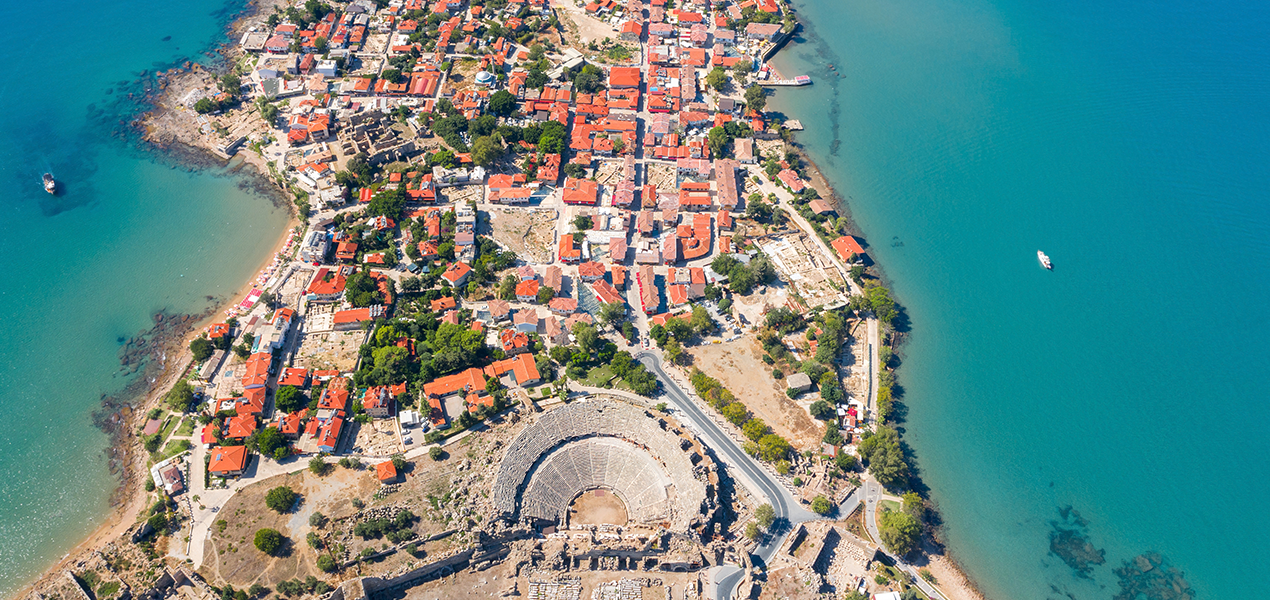Ancient City Of Side
Side, the most important port city of Pamphylia, is built on a peninsula on the coast of Antalya's Manavgat district.
This world-famous peninsula fascinates both local and foreign visitors every year with its ancient beauties. The word Side means “Pomegranate”, the sacred fruit of the ancient Anatolian goddesses, thus the emblem of the city is the pomegranate.
With a history dating back to the 8th century BC, Side came under the rule of the Lydian Kingdom with the entire Pamphylia region in the 7th century BC and after the fall of the Lydian Kingdom, it was ruled by the Persians. The Ancient City of Side is one of the five important cities of the Ancient Pamphylia region. As well as being a natural harbour city in the Pamphylia region, Side was also the only port city until the establishment of Antalya.
Let's take a look at the artifacts and ruins that have remained in all their glory in the Ancient City of Side:
The Monumental Fountain of Side; also known as the Nymphaeum, is a Roman structure located opposite the twin-towered entrance gate of the ancient city and is the largest monumental fountain in Anatolia and the Pamphylia region.
Side Museum: The museum, which was originally built in the 2nd century AD and later underwent modifications, is located within the Agora Bath in the ancient city.
Side Ancient Theatre: Situated in the centre of Side, the ancient theatre is built in the architectural style of Hellenistic and Roman periods and is one of the first and only structures constructed with the upper sections of the seating rows built on vaults that slope upwards. While other theatres in the region were built into the slopes of hills, Side Ancient Theatre stands entirely on arches. This feature makes it the only column-supported theatre in the Pamphylia region. With its embellishments and rich architectural features, the theatre bears resemblances to the famous Colosseum in Rome.
Agora Bath: Dating back to the Roman period, the bath is currently used as the Side Museum.
Other ruins that have survived from the Ancient City of Side to the present day include: colonnaded streets, houses, library, Roman aqueducts, temples, city walls and gate, waterway, harbour bath, great bath, three-pool fountain, Vespasian Monument, South Basilica, State Agora, Byzantine Hospital, Baptistery, Episcopal Palace and Basilica and the Wall of Philippus Attius.
World-renown Temples
Temples in the Ancient City of Side that are worth visiting include;
Temple of Apollo, dedicated to the Greek god associated with music, arts, the sun, fire, and poetry, Temple of Athena dedicated to the Greek goddess of wisdom, arts, strategy, inspiration, and peace, Temple of Dionysus dedicated to the Greek god of wine, pleasure, and festivity in mythology, Temple of Demeter devoted to the Greek goddess of fertility, grain, and harvest and the Temple of Tyche dedicated to the Greek goddess of good fortune and the heavens in mythology.




